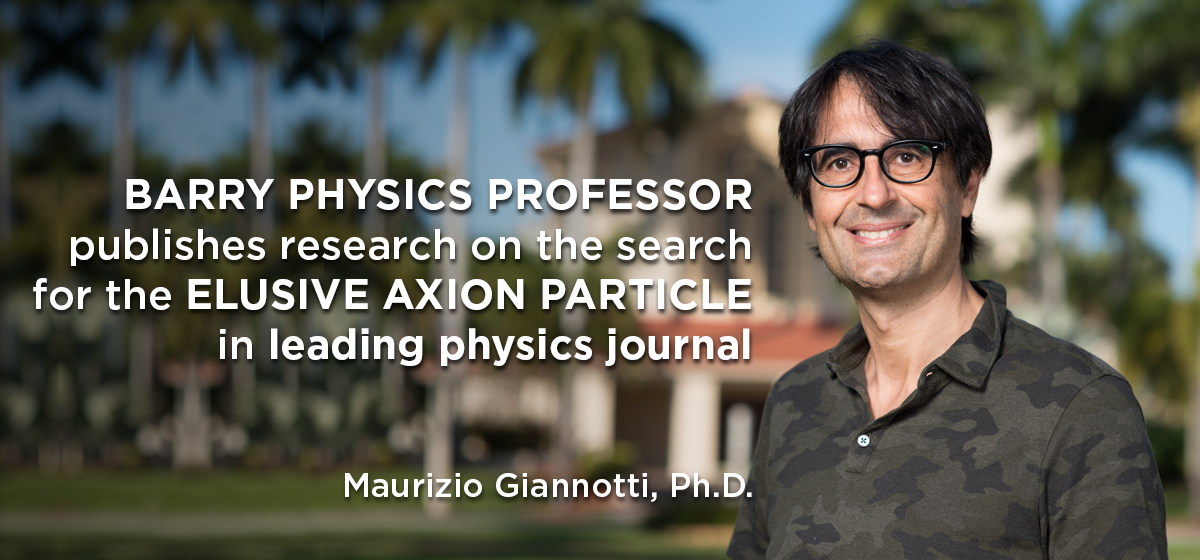Barry University Physics professor Maurizio Giannotti, Ph.D., is interested in Betelgeuse, but not the movie or musical. Betelgeuse is a star – the second brightest in the constellation Orion – that is in its final march to collapse and resulting supernova. As Betelgeuse is dying and also is massive – about 20 times more massive than the sun -- it should be giving off axions, particles that are many times lighter than electrons and thought to be a component of dark matter.
According to Dr. Giannotti, scientists know there is dark matter because its gravitational effects are observable. “We know that there must be much more dark than ordinary matter,” he said. “However, we cannot see dark matter through any other interaction. It is called dark since it interacts with photons so little that we cannot see it with standard telescopes.”
Dr. Giannotti received a NASA-funded grant in 2019 along with MIT Assistant Professor Kerstin Perez and Caltech scientist Brian Grefenstette. The grant offered the team special access to data collected for the first time by the Nuclear Spectroscopic Telescope Array (NuSTAR).
Dr. Giannotti, Dr. Perez and Dr. Grefenstette joined with MIT coauthors Mengjiao Xiao, Brandon Roach, and Melania Nynka, plus Oscar Straniero of the Abruzzo Astronomical Observatory and Alessandro Mirizzi of the National Institute for Nuclear Physics in Italy to publish their research in Physical Review Letters, one of the most prestigious journals in the physics field.
The January 2021 article, “Constraints on Axionlike Particles from a Hard X-Ray Observation of Betelgeuse,” the team noted the importance of what they didn’t find, which is any X-ray signal evidence of axions. But that is an important finding, because it means that their research sets a new upper limit of what an axion must be. Their research shows that axions are less likely than previously thought to couple to photons to emit detectable X-rays. What this means is that axions interact even more feebly than originally thought.
“In my opinion, it is very interesting that Betelgeuse provided such a strong bound,” Dr. Giannotti said. “Our result does not mean that axions do not exist. It simply restricts the available parameters. In the 2020s, there will be a lot of new axion experiments, and our result will guide the experimentalists by restricting the viable parameter space.”
Dedicated to Barry’s first Core Commitment of knowledge and truth, Dr. Giannotti is looking for ways to better understand the physical world. His research will be a topic of discussion with the Astro Math and Physics (AMP) Club, which he co-advises with professor Sanja Zivanovic. He also plans to offer lectures regarding his research to educate and engage the community at large.

